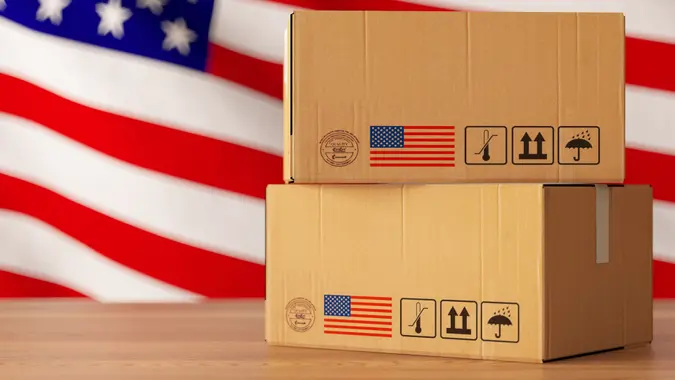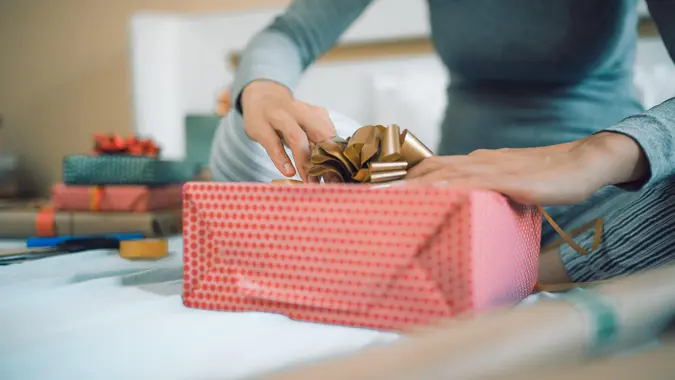Ramit Sethi’s ‘Buy American’ Challenge (and Why No One Takes It)

Commitment to Our Readers
GOBankingRates' editorial team is committed to bringing you unbiased reviews and information. We use data-driven methodologies to evaluate financial products and services - our reviews and ratings are not influenced by advertisers. You can read more about our editorial guidelines and our products and services review methodology.

20 Years
Helping You Live Richer

Reviewed
by Experts

Trusted by
Millions of Readers
Personal finance author Ramit Sethi has a challenge for Americans. In an Instagram post, he said that if you can prove that at least 51% of the items in your home are made in America by giving him a Zoom tour, he’ll write you a $1,000 check.
The challenge was aimed directly at people who have commented on his Instagram posts to encourage others to buy American-made goods instead of those from other countries to “protect America.” However, Sethi said once he presents his offer, he never hears back. Here’s why the “buy American” challenge has no takers.
Global Supply Chains Make It Difficult
Even for those who want to buy mostly (or all) American goods, international supply chains make it hard to do so. Everything from cotton T-shirts to smartphones often involves materials and/or labor from multiple countries, even if the final product is assembled in America.
Some goods just aren’t available as “American-made.”
Product Labels Don’t Always Tell the Whole Truth
Product labels can be misleading. A “made in the USA” claim may only mean the product was assembled in the U.S., while most parts were imported.
The Federal Trade Commission defines “made in the USA” as meaning “all or virtually all” of the product is made in the U.S., but that standard is vague and hard to regulate. Even retailers may not know where their products come from, per NetChoice.
American-Made Products Cost More
The price difference between goods that are imported and those made in the U.S. is a major reason shoppers don’t commit to buying American-made products. Sethi explained that buying American-made items could cost consumers six to eight times more money.
Recently, a serial entrepreneur, Ramon Van Meer, who is the founder of Afina, which sells filtered shower heads, did an experiment to see if Americans would buy a shower head that was made in the U.S. for a much higher price — about $110 more — than the imported version. He was motivated to do this due to skyrocketing tariffs. Even though some people put the more expensive American-made product in their shopping cart, not one person ultimately bought it. The only sales Van Meer made were for the cheaper imported product.
Editor’s note on political coverage: GOBankingRates is nonpartisan and strives to cover all aspects of the economy objectively and present balanced reports on politically focused finance stories. You can find more coverage of this topic on GOBankingRates.com.
 Written by
Written by  Edited by
Edited by 

























